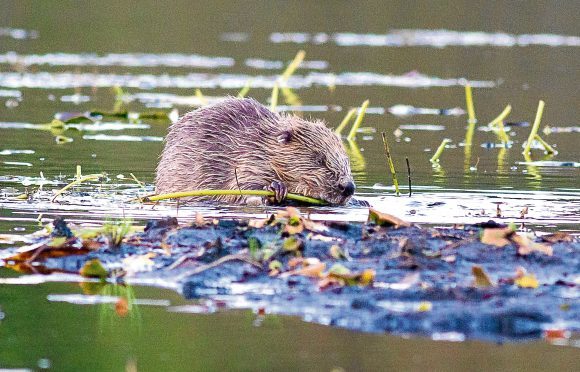A strange anomaly has crept into the Scottish Government’s position about the reintroduction of beavers.
A slowly accumulating population on the River Beauly, a few miles west of Inverness, has suddenly, and rather belatedly, come to the attention of Scottish Natural Heritage. No-one is quite sure how many beavers there are on the Beauly but until very recently there were perhaps 10, perhaps slightly more. But now there are three fewer than there used to be.
An official decision was taken to trap the beavers because someone at senior government level has decided that their presence on the Beauly constitutes “an illegal act”, this despite the fact that, as things stand, it is far from clear that that is the case. SNH staff trapped three of them and took them to Edinburgh Zoo, where two of them promptly died. At that point the trapping process was halted, and more than two weeks later, it remains stalled.
So, as things stand, it would seem that two beavers have died unnecessarily, the SNH action looks both unwise and unwieldy, and the government policy looks compromised.
The decision to recognise beavers as a native species was taken by environment secretary Roseanna Cunningham a year ago. It also specified that in addition to the beavers in the official trial area in Knapdale, the less official Tayside population would be permitted to stay and to extend its range naturally.
This was a brave decision, not least because a handful of farmers on Tayside had a serious case of trigger-itch and depleted the population with some none-too-accomplished shooting.
There had also been some more passive objections from farmers, and from the wider population on the basis that beavers fell trees. This latter complaint always strikes me as a bit pot calls kettle black-ish, given that ours is the only species which both invented and practises widespread clearfell operations.
Meanwhile, on the River Beauly, as natural a beaver landscape as they could wish for, there have been no complaints from the locals, but rather there is some disquiet about SNH’s handling of the situation, and a sense of injustice that what is permissible on the Tay is outlawed on the Beauly.
And whereas the Tayside beavers have edged into productive farmland, the Beauly beavers are on an ox-bow lake and an associated area of the river surrounded by undisturbed natural woodland. The area’s tendency to frequent flooding means that the beavers have no human competition, and nor have they been targeted by the kind of intolerance shown on parts of Tayside – the shooting, the placing of traps on beaver dams, the demolition of dams and lodges, for example.
Historical presence
The Scottish Government’s insistence that beavers should eventually reoccupy their historical range means that, at some point, the Highlands to the south-west of Inverness must be included.
Who says? Well, Hector Boece says. Boece (1465-1536), Dundee-born and educated before studying at the University of Paris and progressing to become the first principle of King’s College, Aberdeen (the antecedent of Aberdeen University), was Scotland’s first serious and widely-read historian. His Historia Gentis Scotorum – History of the Scottish People if your Latin is not up scratch – specifically mentions the presence of beavers on Loch Ness.
Admittedly, he is not talking conservation at the time but rather the native interest in exporting beaver fur, but if it was present in sufficient quantities to constitute an export market, that amounted by definition to a considerable and widespread historical presence.
So how did 21st Century beavers get into the Beauly? The reality is that no-one knows. An accidental escape from one of two private collections in the area is the likeliest source. An “illegal act” is only established if the animals’ provenance can be established and if the release was intentional.
There is also this. One of those two collections is at Sir John Lister-Kaye’s Aigas Field Centre, and one of two demonstration projects (the other is at Bamff, near Alyth) that did more than anything else to show the ecological wisdom of beaver reintroduction.
Providence
I have been to Aigas several times, and have seen the project in operation. I have also witnessed its value as an educational resource, not just for hundreds of pupils from all across the Highlands, not just for paying guests from all over the world who stay there for a week at a time on specific conservation-based courses, but also for SNH staff.
Of course, the bureaucratic mindset of government and government agencies likes to operate within a rigid framework. But in the case of the Beauly beavers, they are dealing with nature, and nature is opportunistic and endlessly flexible.
The Scottish Government and Scottish Natural Heritage could do worse than take a leaf from nature’s book, treat the emergence of the beavers on the Beauly not as an illegal act but an act of providence, and an opportunity. And if they could ask the beavers, they would agree.
